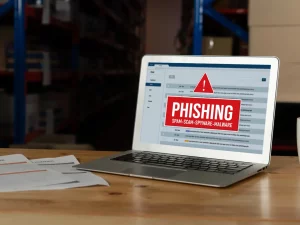Many organizations conduct routine cybersecurity drills, but are these exercises truly preparing them for real-world cyber threats? The increasing complexity and frequency of cyberattacks demand a shift from theoretical training to practical, scenario-based simulations. Cyber-attack simulations provide an immersive, hands-on approach to security testing, allowing organizations to assess their defenses, refine response strategies, and identify weaknesses before they can be exploited. By transitioning from basic security drills to realistic simulations, businesses can enhance their cyber resilience and ensure their teams are ready to face the threats.
Why Traditional Simulations Fall Short
Traditional cybersecurity simulation methodologies have long struggled to capture digital threats’ dynamic and increasingly complex landscape, creating significant gaps in organizational defense strategies. While basic simulations provide insights into vulnerabilities, they often lack:
- Realistic Attack Scenarios – Many tests follow predictable patterns that don’t mirror sophisticated threat actor strategies.
- Continuous Threat Adaptation – Threats evolve daily, but most simulations are performed only periodically.
- Actionable Remediation Plans – Identifying weaknesses is one step; a robust framework for response is equally crucial.
How to Build an Adaptive Cyber-Attack Simulation Program
As digital ecosystems become increasingly interconnected and threat landscapes continuously evolve, organizations must develop sophisticated simulation strategies that identify potential vulnerabilities and build organizational resilience. To make simulations more effective, organizations must shift toward continuous, intelligence-driven attack simulation strategies:
- Leverage Automated Attack Simulations – Use platforms that mimic real-world adversaries and generate real-time insights.
- Integrate Threat Intelligence – Simulations should factor in the latest attack methods, threat actors, and industry-specific risks.
- Test Across the Kill Chain – Assess security posture at every stage of an attack, from initial access to lateral movement and data exfiltration.
- Measure Resilience, Not Just Vulnerabilities – Focus on how quickly and effectively the security team detects, responds to, and mitigates attacks.
Implementing Cyber-Attack Simulations in Your Security Strategy
Before deploying cyber-attack simulations, organizations must plan and integrate them into their security framework. This process involves assessing risk exposure, defining attack scenarios, and refining security measures based on test results.
A well-structured cyber-attack simulation should align with an organization’s industry-specific threats and regulatory obligations. Security leaders must also ensure the simulations are performed regularly to adapt to evolving threats.
A comprehensive cyber-attack simulation strategy requires the right tools and expertise. Picus Security provides advanced Breach and Attack Simulation (BAS) solutions that enable organizations to identify security gaps, validate defenses, and enhance their incident response capabilities.
To explore how cyber-attack simulation can bolster your cybersecurity posture, contact Terrabyte today.




